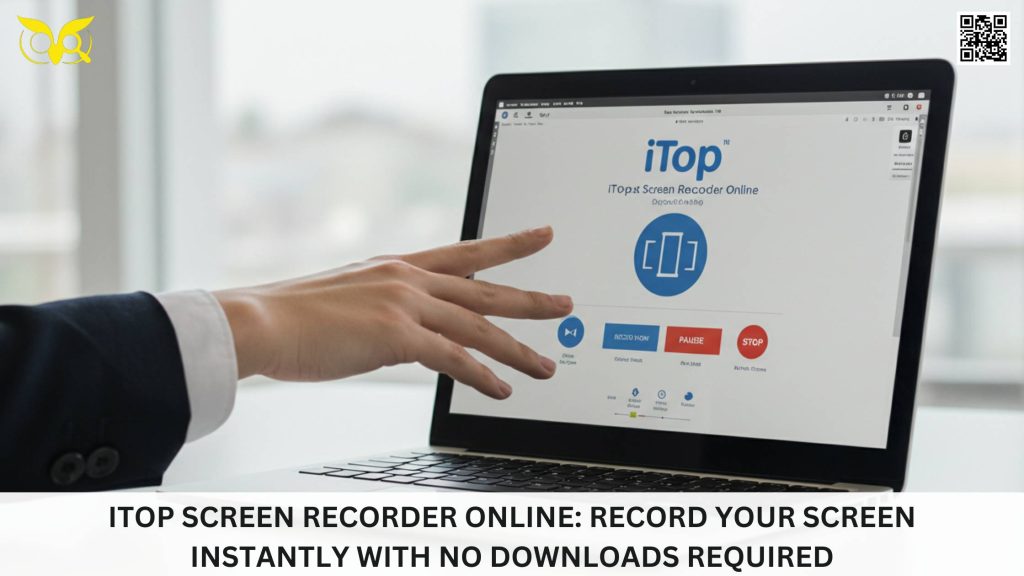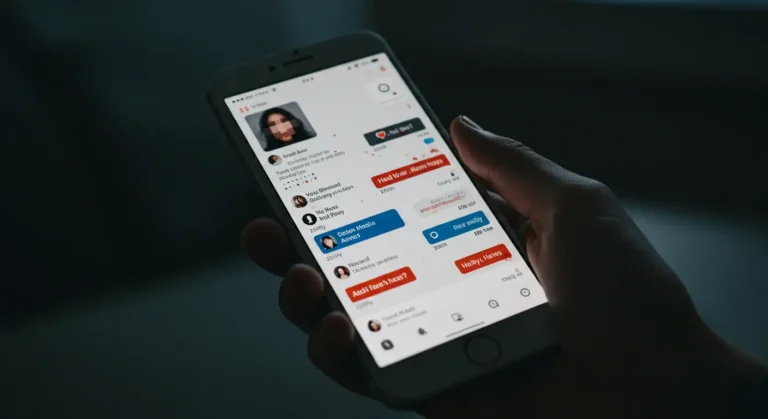Capturing your display has never been less complicated thanks to iTop Screen Recorder Online, an effective browser-based device that lets you record your display screen immediately without any downloads or installations. Whether you are growing tutorials, streaming gameplay, or saving virtual conferences, this free and consumer-friendly recorder is designed for velocity, convenience, and great outcomes.
With just a few clicks, you can start recording directly out of your browser—no software, no delays. Compatible with all predominant structures and supplying easy, HD display seize, iTop Screen Recorder Online is the best solution for all people seeking to report or share on-display screen activity effortlessly.

Record Your Screen Online for Free: Use iTop Screen Recorder with No Installation Needed.
Capturing on-display content is critical for creating attractive tutorials, streaming gameplay, or archiving virtual conferences. With iTop Screen Recorder Online, you can document your display online without spending a dime, without downloading or installing any software program. This browser-primarily based answer grants high-definition video, crisp audio, and intuitive controls, making it the best tool for educators, gamers, commercial enterprise specialists, and content creators.
Why Record Your Screen Online?
Recording your display screen without delay within the browser eliminates tedious downloads, system compatibility problems, and software updates. By deciding on a web recorder, you could:
- Save time: Start recording in seconds—no installs, no waiting.
- Maintain tool fitness: Avoid capability bloatware or conflicting applications.
- Access anywhere: Use any pc with an internet connection and a present-day browser.
These benefits ensure your awareness of content material creation, not technical hurdles.
Key Features of iTop Screen Recorder Online
- Zero Installation: Instantly launch the recorder on your browser—no executables or plugins required.
- HD Video Capture: Record up to 1080p resolution at smooth frame rates, keeping each detail.
- System & Microphone Audio: Simultaneously capture gadget sounds and your voice for clear, expert narrations.
- Customizable Recording Area: Choose full-display screen, software window, or a particular place to awareness your visitors’ attention.
- Built-In Editing Tools: Trim, crop, and annotate clips without delay after recording, streamlining your workflow.
- Secure Cloud Storage: Save recordings directly to the cloud or download them as MP4 documents for clean sharing.
Advantages of Using iTop Screen Recorder Online
- Cross-Platform Compatibility: Works on Windows, macOS, and Linux via Chrome, Firefox, or Edge.
- Free & Unlimited: Record as many motion pictures as you want without a watermark or cut-off dates.
- Privacy & Security: All processing occurs for your browser; no non-public facts are amassed.
- Responsive Support: Access tutorials, FAQs, and network forums to troubleshoot any issues.
These blessings make iTop Screen Recorder Online the go-to preference for seamless screen capture.
Real-World Use Cases
- Educational Tutorials: Demonstrate software use, deliver online lectures, or document displays.
- Gaming Streams & Reviews: Capture epic gameplay moments and percentages together with your target market.
- Business Meetings & Demos: Record webinars, product demos, or far-off collaboration periods.
Whatever your reason, iTop Screen Recorder Online adapts to your desires, ensuring clear, enticing films every time.
Explore: https://baddiehub.news/
Conclusion
Recording your display screen has by no means been more sincere. With iTop screen recorder online, you gain instant get admission to to an effective, no-setup, free screen capture device that promises HD exceptional, robust editing, and seamless sharing. Whether you’re a teacher creating step-by-step tutorials, a gamer showcasing your capabilities, or an expert documenting meetings, iTop empowers you to produce polished movies in just a few clicks.
Ever tried showing something on your screen and wondered, “How do I capture this easily?”
You’re not alone. I’ve been there—staring at a screen, needing to record a quick tutorial for a colleague, or trying to save an important Zoom meeting without jumping through hoops. But every tool I came across either asked me to install bulky software, required sign-ups, or watermarked my content. That’s frustrating when all I want is a clean, fast recording without adding more apps to my system.
That’s when I found a way to record my screen right from the browser, without downloading anything, and it completely changed how I work and share my screen activities.
Why a browser-based screen capture tool just makes sense
Think about this—your device is already cluttered with software, and every download eats up space. What if recording your screen didn’t need any installation at all? That’s what I started looking for.
Here’s what stood out to me once I began using a web-based screen capture solution:
- Instant Access: No need to install anything or wait for updates.
- Low System Load: Since everything runs in the browser, it doesn’t slow down your device.
- Platform Independence: Works on any operating system—Windows, macOS, Linux, and even Chrome OS.
- Safe and Simple: No hidden downloads, no risky permissions.
Let’s break down what makes this approach practical for everyday screen recording.
What is a screen recorder that works inside the browser?
It’s exactly what it sounds like—a tool you can run from your browser window that lets you capture your screen activity. Unlike traditional software like OBS Studio or Camtasia, which require installations and system resources, browser-based solutions let you:
- Capture video from a tab, window, or your entire screen
- Include microphone or system audio
- Choose the resolution and frame rate
- Download your recording or save it to the cloud
This method uses WebRTC, HTML5, and JavaScript APIs behind the scenes—technology that’s widely supported and doesn’t compromise on video quality.
Who needs screen recording, and when?
You might think screen recording is just for YouTubers or streamers. But it’s way more useful than that. I’ve used it across so many scenarios, and here are some real ones you might relate to:
- Work from home: Recording client calls, product demos, or feedback sessions.
- Online teaching: Explaining concepts visually using slides, code, or browser tabs.
- Customer support: Showing step-by-step guides instead of writing long instructions.
- Gaming: Capturing gameplay without installing heavy software like OBS.
- Freelancing: Sending video deliverables or walkthroughs to clients.
Once I started recording this way, it felt like adding a new tool to my digital belt—without actually adding any tools.
Is quality compromised when you skip the installation?
That’s the biggest concern I had. At first, I worried about quality, file size, and whether the videos would even play smoothly. But it turns out that a good online recorder gives you high-definition results with full control over settings.
Take a look at what some of these tools let you control:
| Feature | Available Options |
|---|---|
| Resolution | 480p, 720p, 1080p |
| Audio input | System sound, mic, or both |
| Frame rate | Adjustable (15, 30, 60 fps) |
| Recording area | Full screen, specific window, custom |
| Export formats | MP4, WebM |
| Cloud storage integration | Optional (Google Drive, Dropbox) |
You’re basically getting all the essentials of desktop software—just delivered through a lightweight, browser interface.
How easy is it to start recording?
You might expect a learning curve, but honestly, it couldn’t be simpler. I just opened the site, allowed screen access, and hit record.
Here’s what I usually do:
- Open the recorder page.
- Choose whether I want to capture my whole screen or just a browser tab.
- Select if I want microphone or system audio.
- Start recording.
- Once done, download the video instantly or save it online.
It takes under a minute. No setup. No frustration. That alone made me shift completely away from installed screen recorders.
Important features that make the experience smoother
I’ve tried a bunch of screen capture options online, but the ones worth your time usually offer a handful of features that stand out:
- Full HD Recording – Supports up to 1080p, perfect for tutorials and presentations.
- Flexible Recording Modes – Choose from full screen, application window, or a selected tab.
- Dual Audio Input – Records both internal audio and microphone.
- Editing Tools – Trim or crop videos after recording to remove any extra parts.
- Cloud Saving – Store recordings online or export locally in popular formats.
These aren’t just fancy add-ons—they actually make the post-recording process more efficient. For example, I no longer need to edit elsewhere when I just want to clip off the start or end.
How secure are these online recording tools?
Privacy matters—especially if you’re recording sensitive meetings or internal demos. One reason I prefer browser-based tools now is that all processing happens in the browser itself. That means:
- Your data doesn’t go to any server (unless you choose to upload it).
- You can download your video directly after recording.
- No hidden cookies or background data transfers.
I also make sure the tool is HTTPS secured and doesn’t ask for unnecessary permissions. Most reputable platforms clearly state they don’t store recordings unless you ask them to.
How does it perform across different systems?
One of the standout advantages is that you can use these tools on almost any operating system:
- Windows 10/11 – Works smoothly in Chrome or Edge.
- macOS Ventura/Monterey – No special configuration needed.
- Linux distros like Ubuntu or Fedora – All you need is a modern browser.
- Chromebooks – Finally, a way to record without buying any extensions.
All of this works as long as your browser supports MediaRecorder API and screen capture permissions.
What if your internet connection isn’t stable?
Since the tool runs in your browser and doesn’t rely on uploading your video while recording, an unstable connection won’t crash the session. It saves the video locally in memory until you choose to export or upload.
If you’re on a slow network or working from a public space, this kind of setup is far more stable than cloud-dependent recorders.
What are the limits of using online screen recorders?
No tool is perfect, and while I’ve had great results, there are a few things to keep in mind:
- Cannot record internal audio on macOS without additional settings (Apple’s restrictions).
- Some browsers limit frame rate options to preserve performance.
- You can’t record multiple screens at once unless you switch during the session.
- Maximum recording duration may depend on your RAM if the tool doesn’t use cloud buffers.
So it’s great for short to medium-length recordings. If you’re planning on filming a 3-hour webinar, you might need to keep an eye on memory usage.
Real-life scenario: How I recorded a quick training for a new team member
Last month, I had to onboard a remote team member and couldn’t hop on a call. Instead of scheduling a meeting, I just recorded myself explaining our CMS dashboard. I highlighted each feature, shared some tips, and saved the clip as MP4.
The feedback? “This saved me hours—I can replay it anytime.” That’s the kind of feedback you get when tech doesn’t get in the way.
Choosing the right browser for better recording experience
While most online tools support all browsers, here’s what I’ve found works best:
- Google Chrome: Fastest capture and most stable.
- Microsoft Edge: Very smooth on Windows devices.
- Firefox: Good, but sometimes doesn’t support internal audio.
- Safari: Limited compatibility; best to avoid for this use.
Sticking to Chromium-based browsers usually gives you the best balance between performance and feature access.
Alternatives and similar tools—What else can you try?
If you’re comparing tools, here are some names worth mentioning (though availability and features may vary):
- Loom (Free + Paid) – Great for quick screen shares with webcam.
- Screencastify – Works within Chrome with limited free usage.
- Apowersoft Online Recorder – Good, but needs a launcher download.
- ScreenApp.io – Simple, no install, but minimal editing options.
Each tool has its pros and cons, but the key is: if it runs in the browser, you’re saving time and hassle.
How do I store and share my recordings?
After recording, most tools give you options:
- Download locally as MP4 or WebM.
- Upload to Google Drive or Dropbox.
- Copy a sharing link if cloud storage is enabled.
I usually keep short clips on my system and send them over via email or chat platforms like Slack or Teams.
Can I record both screen and webcam?
Yes, many tools allow webcam overlay. So if you’re doing presentations or tutorials, your face can appear in the corner of the video—just like in YouTube walkthroughs.
You can usually resize or move the webcam window and choose whether to keep it on for the full session.
What types of users will find browser-based recorders most useful?
From my experience, these are the top users who benefit:
- Educators creating class content and visual guides.
- HR teams recording onboarding flows or compliance training.
- Sales reps sending product tours or demo walkthroughs.
- Software developers explaining bugs or UI changes visually.
- Gamers wanting to record quick clips without OBS.
The flexibility is what makes this tool fit into different workflows so smoothly.






